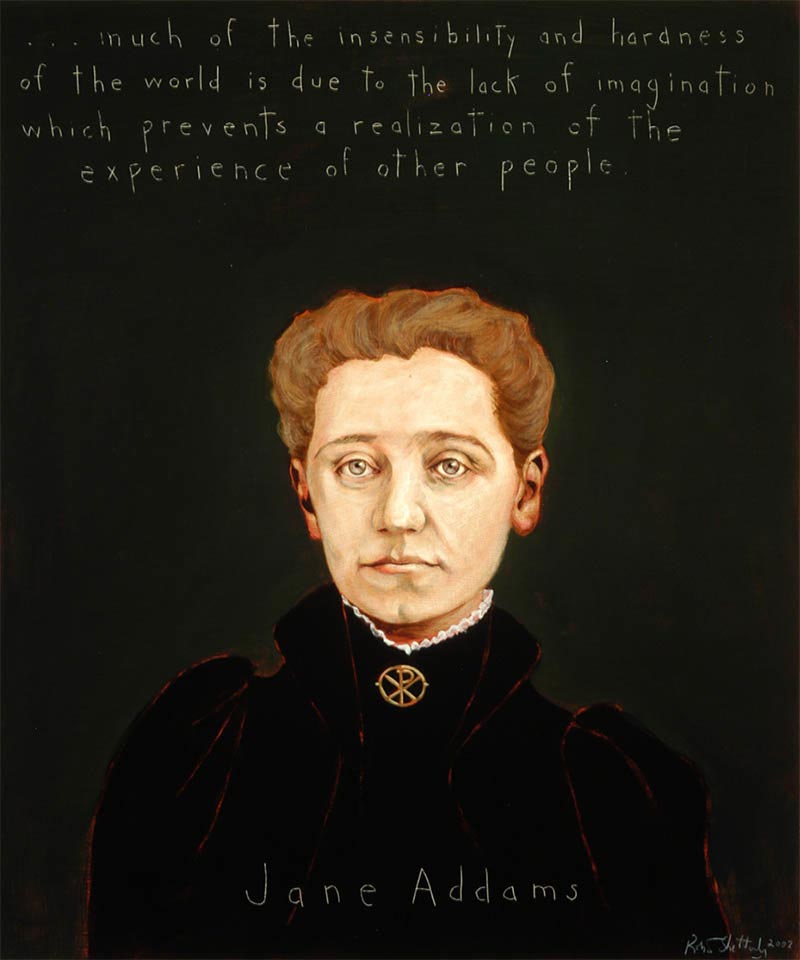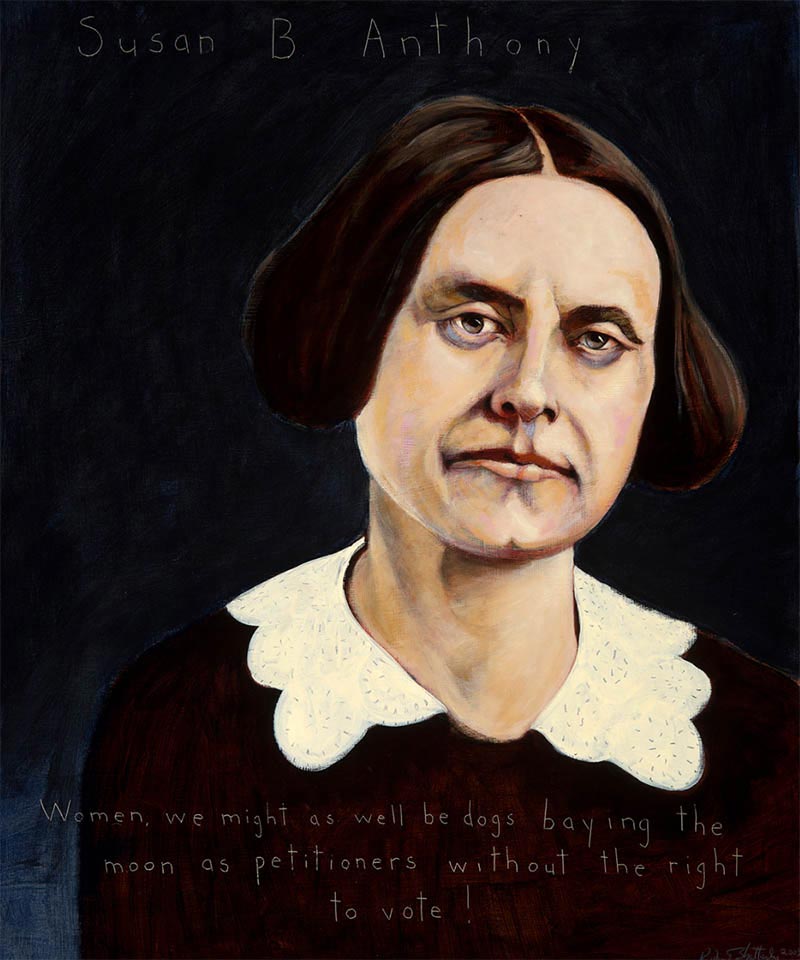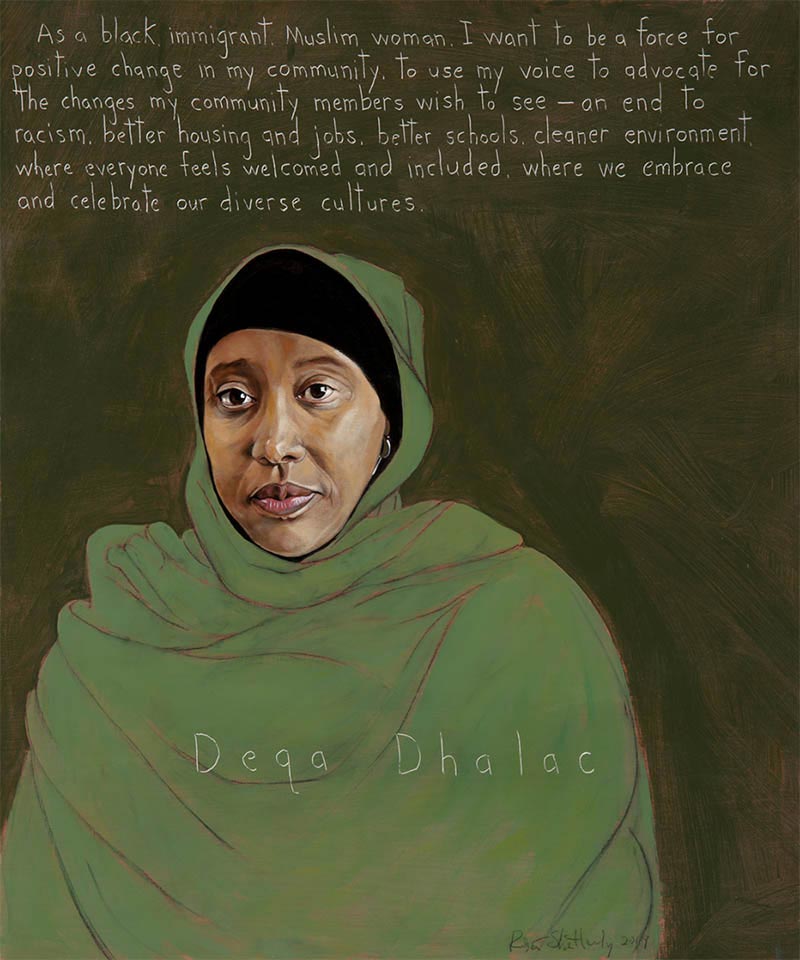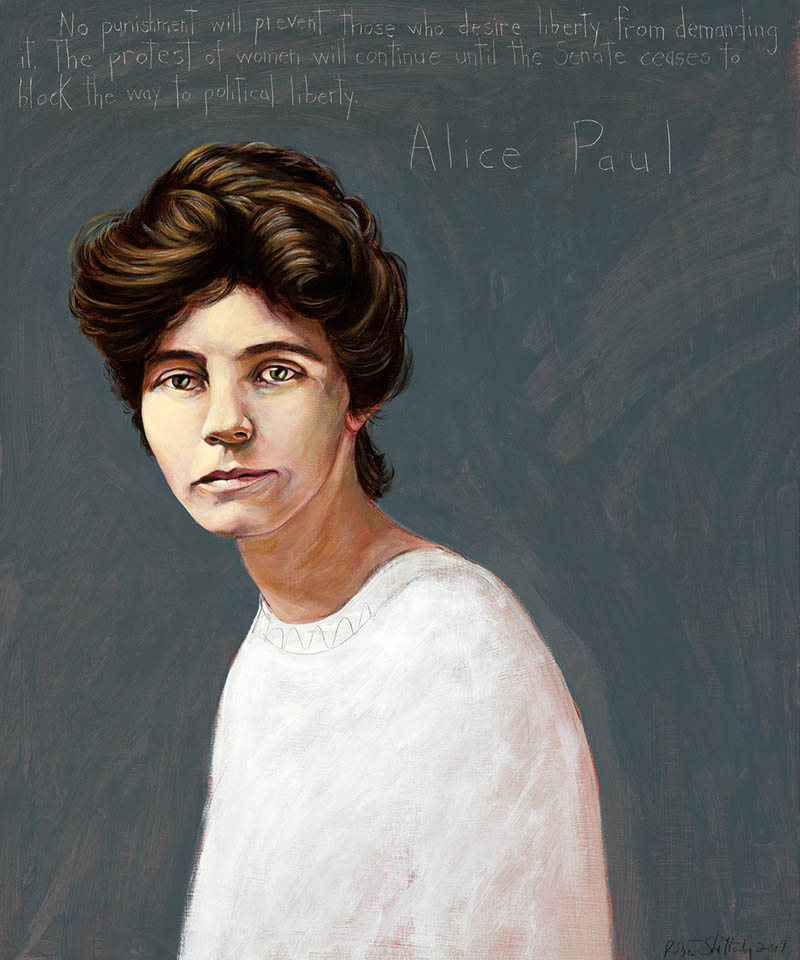
Alice Paul
Women's Rights Activist : 1885 - 1977
“No punishment will prevent those who desire liberty from demanding it. The protest of women will continue until the Senate ceases to block the way to political liberty.”
Biography
1905: Graduated as class valedictorian at Swarthmore College.
1913: Co-founded the Congressional Union of Woman Suffrage.
1923: Introduced the Equal Rights Ammendment in Congress.
Was jailed three times for her activism.
Few people devote their entire lives to one cause as Alice Paul did.
Born into a Hicksite Quaker family in 1885, Alice Stokes Paul was raised to believe in the central tenets of the Quakers, including plain speech, simplicity, and gender equality. She often attended suffragist meetings with her mother, and it is little coincidence that famous suffragists such as Susan B. Anthony (profiled on this website) and Lucretia Mott were Quakers as well. Paul was highly educated, earning degrees in biology, sociology, economics, and law.
Her education as an activist began in England. In 1907, Paul was in Birmingham studying social work when she met the Pankhursts, England’s famous suffragette family. Rather than using petitions and prayer, the Pankhurst women engaged in more radical activities to get the suffrage movement noticed, including heckling and breaking windows. “Deeds not words” was their motto, and Alice Paul joined them. Their actions got them arrested several times; the suffragettes protested the arrests with hunger strikes. Seeing how much national attention suffrage received in England, Paul returned to America in 1910 bringing “deeds not words” with her.
Paul became a member of the National American Women’s Suffrage Association (NAWSA), and soon led its congressional committee to draft a federal suffrage amendment. In 1912, Paul and two friends went to Washington, DCto organize a demonstration.
Determined to get noticed, Paul organized a huge parade of women on March 3, 1913 to coincide with Woodrow Wilson’s presidential inauguration. Thousands of women marched up Pennsylvania Avenue with banners and floats. The huge crowd of onlookers taunted the suffragists with verbal insults, which escalated into physical violence as the police looked on. When order was eventually restored, Paul’s strategy had worked. The newspapers covered the event extensively, and suffrage had captured nation´s attention.
Taking advantage of the publicity, Paul formed the Congressional Union for Woman Suffrage (CU) as part of NAWSA, designed to lobby for a federal constitutional amendment that would give women the right to vote. But in 1914, the groups split, divided over the best approach to their issue. While Paul was adamant about passing a federal law, NAWSA’s efforts were geared toward achieving suffrage on a state-by-state basis.
Paul formed the Woman’s Party of Western Voters in 1916 to support the women in some of the western states who already had the vote. Soon thereafter, the WP became known as the National Women’s Party, although the formal merger or the CU and WP into the National Women’s Party did not take place until June 1917.
In keeping with what Paul had learned in England, the NWP made certain to stay in the public eye. Demonstrations, pickets, parades, watch fires and hunger strikes were daily occurrences. They published The Suffragist newspaper and called out whichever party was in power (another Pankhurst tactic) for not passing the amendment Paul had named the Susan B. Anthony Amendment.
In 1917, the White House became the focus of their picketing. Called Silent Sentinels, Alice Paul and others stood near the White House, holding suffrage banners and saying nothing. They were tolerated and overlooked until WWI broke out, at which point they were confronted and attacked for the “unpatriotic” act of challenging a president during wartime. One of their banners read, “The Time has Come to Conquer or Submit, for us There Can Be But One Choice. We have Made It.”
Paul and the other suffragists were arrested and sent to Occoquan Workhouse, where they were subject to beatings and deplorable living conditions. Paul immediately began a hunger strike. The prison officials deprived her of sleep, threatened to commit her to an insane asylum, and finally forced tubes down her throat to feed her. Paul´s resolve never wavered. Meanwhile, reports of the women´s abuse began to anger the public, building support for the suffragists. Because of the public outrage, Paul and her compatriots were finally released in November 1917.
A week after her release, Congress set January 1918 as the date to vote on the suffrage amendment. The day before the vote, President Wilson came out in favor of it. The House passed it, but the Senate, waiting until October, failed to pass it by just two votes. Alice Paul and the NWP stayed in the news by burning the President’s speeches. To Paul’s mind, Wilson’s speeches about democracy overseas were meaningless without full rights for everyone at home. And at last, in June of 1919, both the House and the Senate passed the amendment. A year later Tennessee ratified it; it was the last state to do so. The Susan B. Anthony Amendment had given women the right to vote.
Not content with this victory, Paul continued pressing for women’s rights, determined to “remove all remaining forms of the subjection of women.” In 1923, she introduced in Congress the first Equal Rights Amendment, which she called the Lucretia Mott Amendment. Paul submitted the amendment every year until Congress passed it in 1972. The states, however, never ratified it.
Alice Paul never married, spending her life crusading for women’s rights. When asked why, she replied with a quote of her mother’s, “When you put your hand to the plow, you can’t put it down until you get to the end of the row.”
Related Portraits
Programs
Americans Who Tell the Truth (AWTT) offers a variety of ways to engage with its portraits and portrait subjects. Host an exhibit, use our free lesson plans and educational programs, or engage with a member of the AWTT team or portrait subjects.
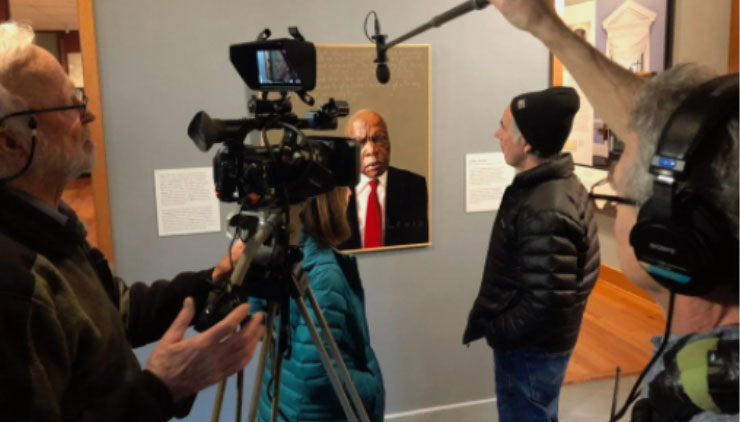
Education
AWTT has educational materials and lesson plans that ask students to grapple with truth, justice, and freedom.

Exhibits & Community Engagement
AWTT encourages community engagement programs and exhibits accompanied by public events that stimulate dialogue around citizenship, education, and activism.
